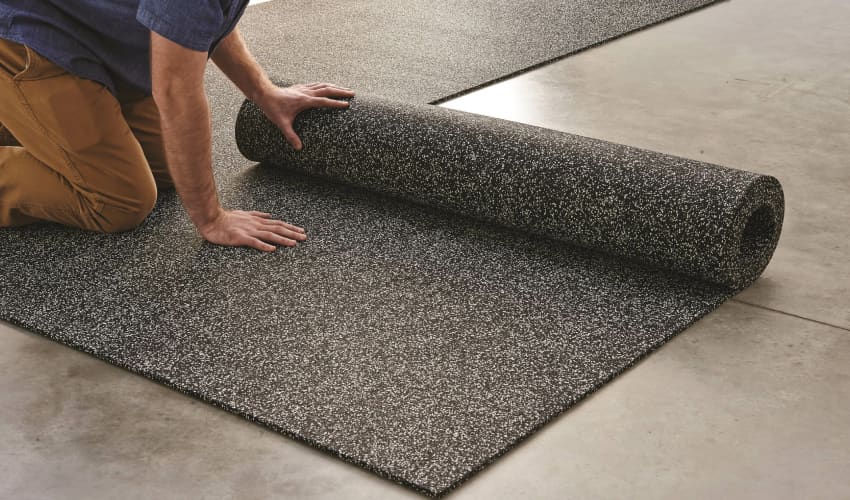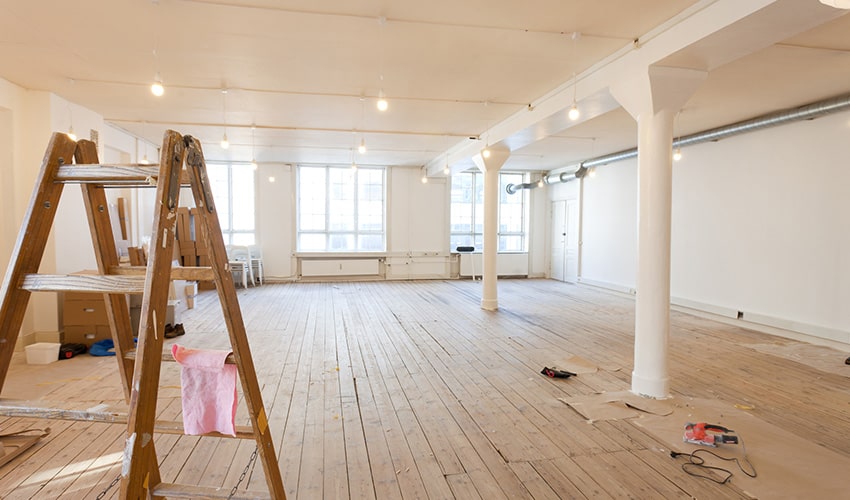Which Are The Best Flooring Choices For Your Renovation Project?

When renovating or building a new home, one of the most important design decisions is choosing the right flooring. The floors are a major visual element that impacts the aesthetics and functionality of every room.
With so many flooring options to pick from, it can be overwhelming to select the best materials for your home renovation or building project. In this article that given by the best renovation company, we will discuss the pros and cons of the most popular flooring choices to help you decide which are the best flooring choices for your renovation project.
Best Flooring Choices For Your Renovation Project
Hardwood Floors

Hardwood floors are a timeless option that adds warmth and value to any home. It comes in a variety of wood species, colors, grades, and plank sizes to fit your style. Hardwood is ideal for living rooms, dining rooms, bedrooms, and other dry areas. Oak, maple, cherry, and walnut are popular wood species. Prefinished hardwood floors are the easiest to install and maintain.
Pros:
- Beautiful and classic look
- Withstands daily wear and tear
- Easy to clean and maintain
- A good investment that increases home value
Cons:
- Expensive upfront cost
- Can dent, scratch, or stain if not properly cared for
- Not good for moisture-prone areas like basements or bathrooms
Ceramic and Porcelain Tile Floors

Tile floors provide an elegant, seamless look with very durable and water-resistant properties. Ceramic and porcelain are the most common tile options. Ceramic tile works best for kitchens, bathrooms, mudrooms, and laundry areas that need to withstand moisture. Porcelain tile is even more robust for heavy traffic areas. Make sure the subfloor is smooth before installation.
Pros:
- Highly water-resistant, great for kitchens, baths, laundry
- Easy to clean and maintain
- Very durable and scratch-resistant
- Many color, pattern, and size options
Cons:
- Hard, cold surface, not good for standing a long time
- Re-tiling requires a professional
Luxury Vinyl Plank Flooring

Luxury vinyl plank (LVP) mimics the look of real hardwood or stone with a durable, waterproof vinyl construction. LVP clicks together easily for DIY installation. LVP is a versatile flooring choice suitable for kitchens, bathrooms, basements, laundry rooms, or any room in the house. It comes in oak, maple, tile, and stone. LVP works great over concrete subfloors.
Pros:
- Waterproof and dent/scratch-resistant
- Good affordability and value
- Easy click-lock installation
- Realistic wood and stone looks
- Soft, warm feel underfoot
Cons:
- Cannot refinish or sand like real wood
- Not suitable for extremely hot climates
- Heavy furniture can dent if not protected
Laminate Wood Flooring

Laminate flooring replicates the appearance of wood by fusing a printed image onto composite planks. Affordable and easy to install, laminate is a budget-friendly option. Laminate suits bedrooms, living rooms, dens, and other dry areas that won’t get wet. Use foam padded underlayment for noise reduction. Laminate offers the best value for a wood flooring look on a budget.
Pros:
- Affordable, low-cost material
- Quick and easy floating installation
- Good durability for the price
- Many oak, maple, exotic wood looks
Cons:
- Cannot refinish or sand like real wood
- Not water resistant, avoid baths, laundry
- It can appear fake from near
Carpet Flooring

The carpet provides softness and warmth underfoot. Fibers like nylon and polyester resist stains, while wool offers natural durability. Padding improves comfort. Carpet works well in bedrooms, dens, and other living spaces, especially for young kids’ rooms. Use low-pile commercial-grade carpet for high-traffic areas. Regular vacuuming and prompt stain removal keep the carpet looking its best.
Pros:
- Soft, warm feel for comfort
- Noise absorption
- Range of fiber options and colors
- Padding improves insulation
Cons:
- Can stain, crush, and show wear over time
- Mold and mildew issues if not properly dried
- Shedding and vacuuming are required
Natural Stone Floors

Elegant granite, marble, travertine, and slate create a highly decorative look for homes. These natural stone floors make an impressive statement. Natural stone offers unmatched beauty for kitchens, entryways, baths, and living areas. Softer stones like marble require more frequent sealing. Granite and travertine have lower maintenance needs. Proper installation is key to preventing cracks.
Pros:
- Beautiful and unique natural patterns
- Premium high-end aesthetic
- Adds value for resale
- Very durable and long-lasting
Cons:
- Expensive material and installation
- Cold underfoot unless heated floors are installed
- Can stain, etch, or crack if not properly sealed
- It requires structural reinforcement
Concrete Floors

Concrete creates an edgy, urban look, like in warehouses converted to lofts. Stains and polishes add color or a glossy finish. Concrete floors work for basements, laundries, kitchens, and living spaces, seeking an urban loft look. They withstand heavy use. Use radiant heat systems and area rugs to increase comfort.
Pros:
- Inexpensive material cost
- Very durable for high-traffic
- Industrial, modern aesthetic
- Stains or polishes customize the look
Cons:
- Hard, without much cushion or warmth
- Can crack if substrate shifts
- Moisture issues in basements
- Requires sealing for easy cleaning
Bamboo Flooring

Bamboo offers an eco-friendly appeal, resembling wood but made from renewable grass. Manufacturers press strands together to form planks. Bamboo complements modern, eco-conscious homes. It adds warmth and style to bedrooms, living rooms, and other dry areas. Select carbonized bamboo for a darker tone. Use window coverings to protect from UV rays.
Pros:
- Sustainable, eco-friendly material
- Attractive natural wood grain look
- Very durable and hard material
- Resists moisture, good for kitchens and baths
Cons:
- More expensive than oak or pine
- Susceptible to sun damage and fading
- Prone to scratches if unfinished
- Requires adhesives with VOC off-gassing
Rubber Flooring

Rubber floor tiles offer sound dampening and comfort underfoot. Easy to install and waterproof, rubber works for heavy-use areas. Rubber floors suit laundry rooms, basements, kitchens, playrooms, and exercise rooms. The soft surface provides comfort for extended standing. Use duct tape to hold tiles firmly.
Pros:
- Soft, padded feel reduces fatigue
- Noise and echo reduction
- Waterproof, great for laundry rooms
- Easy DIY click-together tiles
Cons:
- Prone to scuff marks and stains
- Tiles can come loose over time
- Limited color and pattern options
- Struggle on uneven subfloors
Cork Flooring

Thick cork tiles or planks provide a quiet, comfortable surface that insulates. Naturally water and mildew-resistant, cork adapts well to moisture fluctuations. Cork works well for bedrooms, family rooms, playrooms, and studies that need sound absorption. Choose polyurethane-coated cork for increased protection in dining rooms and kitchens.
Pros:
- Warm, quiet, and comfortable feel
- Moisture and mildew-resistant
- Naturally insulating properties
- Sustainable material renews itself
Cons:
- Not as durable as wood or tile
- Dents and scratches appear over time
- Poor resistance to high heels
- Difficult to repair or replace pieces
Which is The Best Floor Treatment for Your Renovation Project?

With so many great flooring options, you might get confused by thinking about which are the best flooring choices for your renovation project. You need to focus on choosing materials suitable for each room’s needs. Prioritize moisture resistance in bathrooms, kitchens, and basements prone to water exposure. Select warm, softwoods or carpets for bedrooms. Consider noise-dampening abilities for upper-level floors.
Review expected foot traffic and durability needs. Don’t overlook your interior design style; choose colors, patterns, and textures that reflect your personality. While costs vary widely, balance your budget with the long-term value of quality flooring. Taking the time to weigh these factors carefully will pay dividends in fashioning your ideal floors during renovation.
Conclusion
The flooring sets the tone for a home’s style while withstanding everyday life. As a major design decision, be sure to research your best options thoroughly before renovating or building new construction. Hardwoods add timeless warmth and value throughout the home.
Tile and vinyl plank flooring delivers durability for kitchens and baths. Carpet creates softness underfoot in bedrooms and living spaces. Additional choices like concrete, cork, and rubber cater to unique homeowner tastes.




